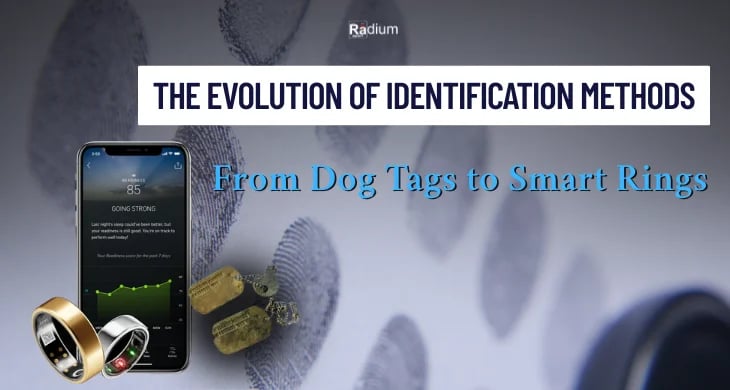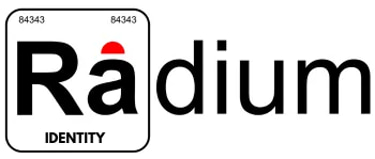From Dog Tags to Smart Rings: The Evolution of Identification Methods
Identification methods have evolved from military dog tags to smart rings, integrating biometric sensors for security and health. This transition highlights advancements in secure and efficient identification.
Shubhanshi
4/26/20253 min read


Identification methods have evolved significantly over time, from simple name and serial number plates to advanced biometric sensors. What started as a necessity for military identification has now expanded into various domains, including personal security and health monitoring. The transition from military dog tags to modern smart rings reflects how technology has advanced to meet the growing need for efficient and secure identification methods.
The History of Identification Tags
One of the first mentions of soldiers wearing tags to identify themselves is from long ago. But modern methods of identification started to take root during the Civil War time. Soldiers feared that they would not be identifiable if they perished on the battlefield. As a result, they began making their own identification tags by inscribing their names on paper or fabric and attaching them to their uniforms. The first official request to issue dog tags army-wide came in 1899 after the Spanish-American War. By the early twentieth century, the tags were standardized into round disks stamped with a soldier's name, number, company, and regiment.
Military Dog Tags and Their Evolution
In World War II military dogs tags became a real standard that all soldiers wore now. Over the years, their design and functions got much more complex and went beyond just simple labels with names and serial numbers. Modern military dog tags now contain additional information such as blood type, religious preference, and even emergency contact details. Some advanced dog tags for military use even incorporate microchips for more efficient identification.
The first army to issue troops with dog tags was the Prussians during the 1870 Franco-Prussian War. The tags, called "recognition tags," ensured that fallen soldiers could be identified. Today, dog tags are used not only for military personnel but also for pets, as the practice of attaching ID tags to animals became popular in the late 1800s.
Dog Tags for Pets and Civilian Use
The idea of ID tags for pets hit the scene big time in late nineteenth century times. Responsible pet owners began snapping little metal tags onto their pets’ collars so when these pals got lost somewhere they could at least have a chance of being identified. Beyond just military use, ID tags became an easy and effective way to identify people. The tradition continues today, with pet identification tags becoming more sophisticated, including QR codes and embedded microchips.
The Rise of Smart Rings and Biometric Identification
As technology advanced people began to feel overwhelmed just typing in passwords or using the keys on their phones all the time. Suddenly people needed a more secure, more compact way of identifying themselves, and that's when biometric sensors and smart rings really jumped into the spotlight. Unlike military dog tags, which primarily serve as an identification method for soldiers, smart rings offer multifunctional capabilities. They integrate biometric information, two-factor authentication, and even health monitoring features.
Biometric sensors embedded in smart rings can track heart rate, blood oxygen levels, and even stress levels, making them an essential tool for health-conscious individuals. These wearable devices are designed for personal security and authentication in various technological ecosystems. They employ identification methods such as motion recognition, gesture interfaces, and Doppler shift frequency detection to ensure accurate user identification.
Security and Privacy Risks of Smart Rings
With smart rings becoming much more popular these days, there's definitely a growing number of folks worried about security and privacy. Since these devices contain sensitive information like biometrics, if they get into wrong hands this could really cause trouble. To mitigate risks, smart rings utilize advanced two-factor authentication methods, including PIN codes, fingerprint recognition, and encrypted communication channels.
Comparative Summary
Future of Identification Methods
Look, we're going to see big improvements in ID technology that will impact militaries and civil society. We're really talking about something really cool that will come to soldiers and regular folks. Smart rings are expected to incorporate batteryless energy harvesting, making them more sustainable. Military dog tags may also evolve to include real-time tracking capabilities and embedded biometric authentication features.
The need for reliable and secure identification methods. Whether for military personnel, pets, or personal security, identification tags will continue to evolve, adapting to technological advancements and societal needs.
Solutions
Advanced identity verification and KYC services.
Quick Access
Access
© 2025. All rights reserved.
